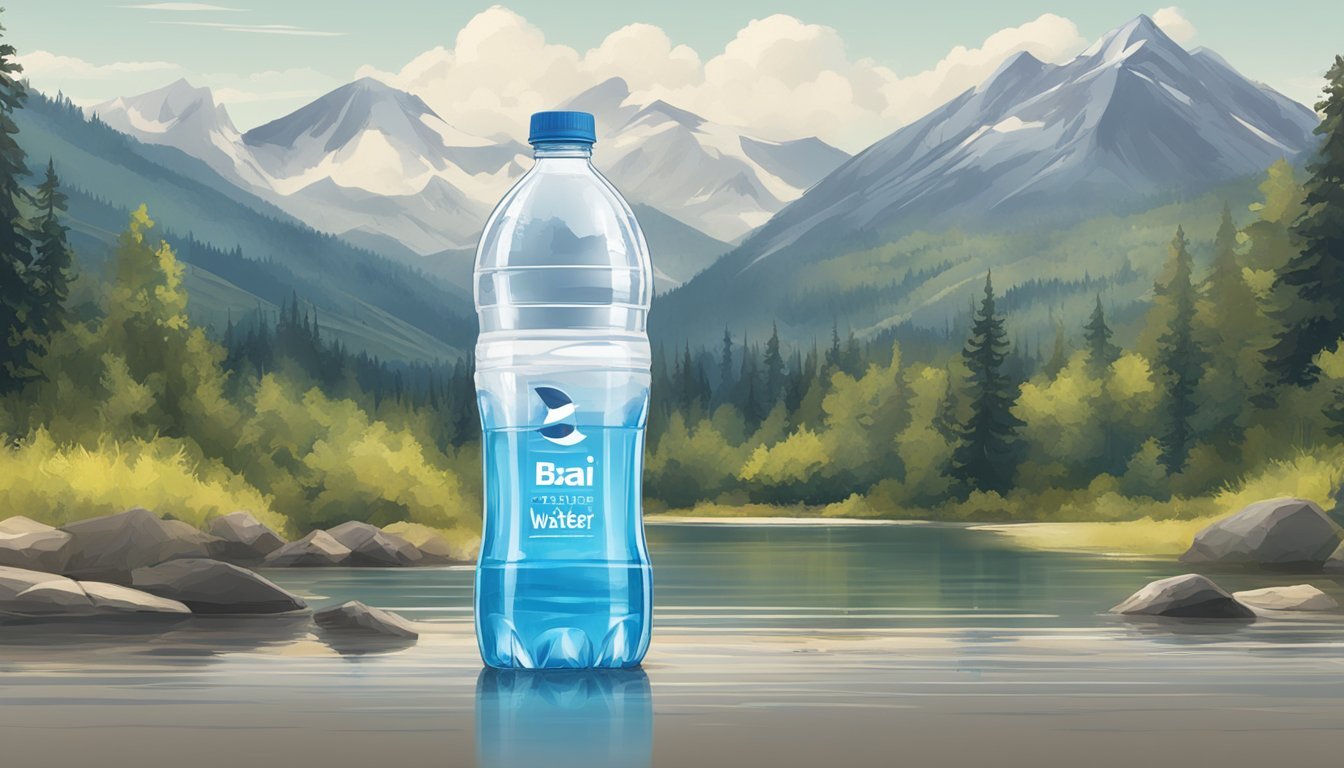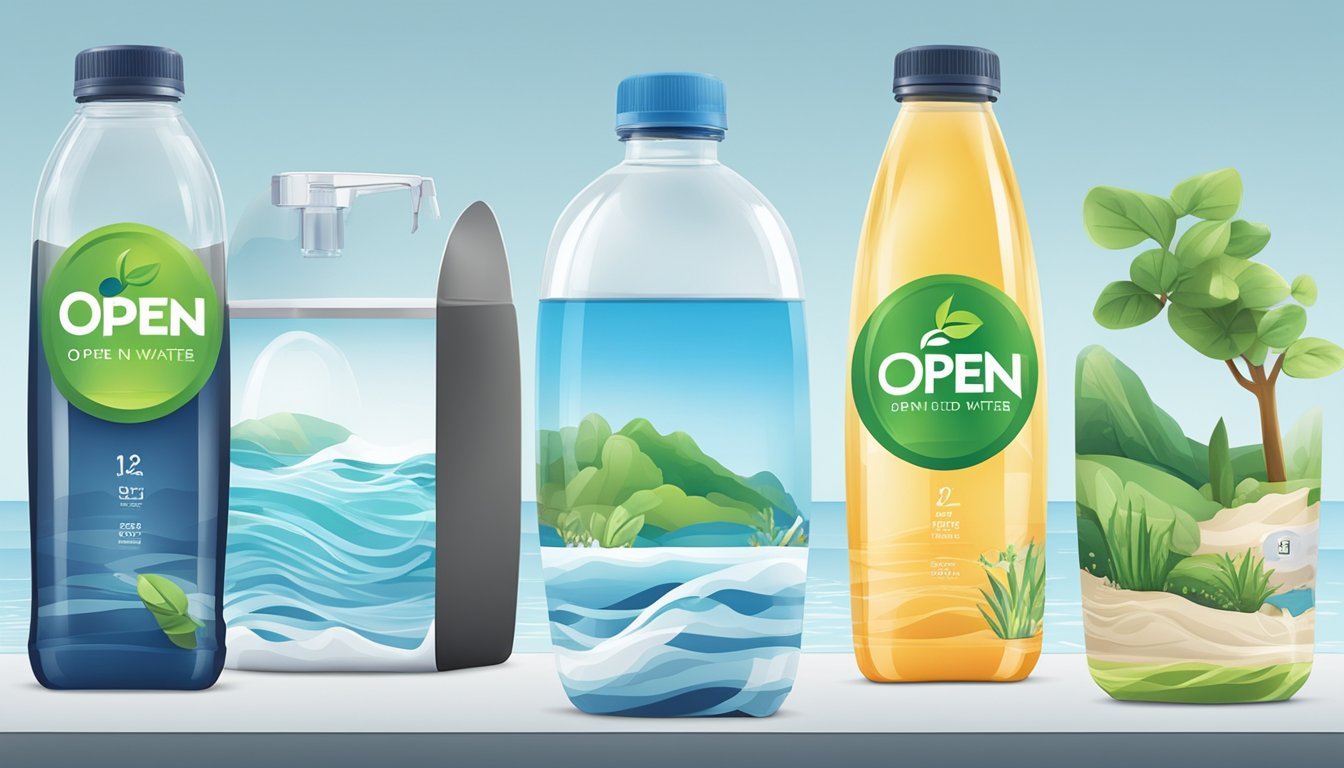Bai vs. Open Water
Comparing the Best Bottled Water Options
When it comes to choosing between Bai and Open Water, consumers often prioritize taste, health benefits, and environmental impact. Bai, known for its antioxidant-infused beverages, offers a variety of flavored waters that appeal to those looking to boost their vitamin intake while enjoying a low-calorie drink. Open Water, on the other hand, focuses on providing pure, unflavored water with a strong emphasis on eco-friendly packaging and sustainability.
For those prioritizing flavor and additional health benefits, Bai stands out with its range of antioxidant-rich options and low-calorie content. With only ten calories per bottle and no artificial sweeteners, Bai appeals to health-conscious individuals seeking hydration with a nutritional boost.
Conversely, Open Water targets environmentally-minded consumers with its commitment to sustainability. Packaged in recyclable aluminum bottles, Open Water aims to reduce plastic waste while delivering pure hydration. The choice between Bai and Open Water ultimately hinges on whether one's priority lies in flavored, antioxidant-infused water or eco-friendly, unflavored hydration.
Overview of Bai and Open Water Brands
Bai and Open Water are notable bottled water brands with distinct features and offerings. Exploring their histories, product ranges, and market positioning provides valuable insights into their unique benefits.
Brand History and Origin
Bai:
Bai was founded by entrepreneur Ben Weiss in 2009. The brand initially gained traction with its antioxidant infusion drinks that blend coffee fruit extract with flavored water. Bai's mission focused on offering low-calorie beverages with natural ingredients, distinguishing it from other bottled water brands. The brand's innovation and health-oriented approach quickly set it apart, gaining popularity among health-conscious consumers.
Open Water:
Open Water, founded in 2014, focuses on sustainability. The brand addresses environmental concerns by offering water in 100% recyclable aluminum bottles and cans. The company sources its water from natural springs and emphasizes reducing plastic waste. This eco-friendly approach appeals to environmentally conscious consumers, aligning with broader trends in sustainable consumption.
Product Range and Varieties
Bai:
Bai offers a variety of flavored water options infused with antioxidants. Their product range includes beverages like Fiji apple and Honduras cherry, boasting just 1 gram of sugar and 10 calories per bottle. Bai's waters are also gluten-free and contain antioxidants from coffee fruit extract and tea extract. This range attracts customers looking for a flavorful yet healthy hydration option.
Open Water:
Open Water provides still and sparkling water options. Sourced from natural springs, the water is packaged in recyclable aluminum. The brand markets itself as a sustainable alternative to traditional bottled waters, targeting eco-friendly customers. By focusing on minimal environmental impact, Open Water positions itself distinctively in a market filled with plastic bottles.
These brands each cater to different consumer needs, with Bai focusing on health and flavor and Open Water prioritizing sustainability.
Nutritional Profiles
When comparing Bai and Open Water, it is essential to analyze their ingredients, calorie content, and nutritional benefits. This section provides a detailed comparison of what each brand offers regarding these aspects.
Ingredients and Additives
Bai's beverages are known for their natural ingredients, with each flavor featuring a blend of fruit extracts and antioxidant-rich compounds. Common ingredients include coffee fruit extract, vegetable juice concentrate for coloring, and stevia leaf extract for sweetness.
Unlike many flavored waters, Bai does not use artificial sweeteners, opting instead for natural alternatives like erythritol and stevia. This ensures a minimal impact on blood sugar levels.
Open Water goes in a different direction with simpler ingredients. Being a more traditional bottled water, it contains no flavor additives or sweeteners. This brand emphasizes purity and sustainability, often packaged in recyclable aluminum cans instead of plastic bottles.
Calories and Sweeteners
Each bottle of Bai contains only 10 calories, primarily due to the use of erythritol and stevia leaf extract as sweeteners. These sweeteners provide a low-calorie alternative to sugar and help keep the beverage sweet without adding significant calories.
Bai beverages have just 1 gram of sugar per serving. This low sugar content ensures that the drinks are diet-friendly and suitable for those monitoring their sugar intake. The absence of artificial sweeteners like aspartame further enhances its appeal to health-conscious consumers.
Open Water, being a traditional water without flavorings or sweeteners, contains zero calories. It has no added sugars or any form of sweeteners, making it an excellent choice for those who prefer their hydration free from any additives. Its Nutrition Facts label reads as pure as it gets, listing 0 grams of sugar and virtually no calories.
Vitamins and Antioxidants
Bai's unique selling point lies in its inclusion of antioxidants derived from ingredients such as coffee fruit extract. These antioxidants help fight free radicals in the body, providing a health benefit beyond simple hydration. Additionally, some of Bai’s flavors are fortified with vitamin C, giving an extra nutritional boost.
While not marketed for its vitamin content, Open Water maintains a strong focus on pure hydration and electrolytes. Some variations may contain added sodium for electrolyte balance, which can help replenish minerals lost through sweat. However, it typically does not include additional vitamins or antioxidants.
In summary, Bai offers enhanced hydration with added health benefits due to its ingredients and low-calorie sweeteners. Open Water focuses on pure, unadulterated hydration, ensuring no added sugars or calories.
Health and Hydration Benefits
Examining Bai and Open Water reveals distinctions in hydration efficiency and health benefits. These factors shed light on the differences between these two bottled water options.
Hydration Efficiency
Bai water contains antioxidants from coffee fruit and tea extracts, which may appeal to those seeking more than just hydration. It boasts a low-calorie count, with only 1 gram of sugar and ten calories per bottle. This can encourage better hydration by making water more enjoyable to drink.
Open Water focuses primarily on providing pure hydration without additives. Packaged in aluminum cans, it avoids potential chemical leaching from plastic bottles, promoting a cleaner hydration experience. The absence of any added sugars or flavors ensures that the primary benefit is straightforward hydration support.
Potential Health Benefits
Bai water offers several potential health benefits, such as supporting the immune system with added antioxidants and vitamin C. The beverage is gluten-free and vegan, making it suitable for people with dietary restrictions. Its unique blend of fruit infusions and minimal sugar contributes to overall wellness.
Open Water relies on its commitment to purity and environmental sustainability. By avoiding plastic, it addresses concerns about chemical contaminants. The use of recyclable aluminum cans aligns with eco-friendly practices, which can resonate with health-conscious consumers. While it lacks the added nutrients found in Bai, its emphasis on pure hydration remains a significant health benefit.
Environmental Impact and Sustainability
When choosing between Bai and Open Water, it's important to consider their environmental impact. Key areas include the materials used in packaging and the overall environmental footprint.
Packaging Materials
Bai uses traditional plastic bottles for its beverages, which, while lightweight and durable, contribute to plastic waste if not recycled properly. These bottles are typically made from PET, which is recyclable but often ends up in landfills.
On the other hand, Open Water focuses on more eco-friendly packaging by using aluminum cans. Aluminum is infinitely recyclable and has a higher recycling rate compared to plastic. This material choice can significantly reduce long-term waste and is generally viewed as more environmentally friendly.
Environmental Footprint
The process of producing and distributing bottled water impacts the environment considerably. Plastic bottles, as used by Bai, result in a substantial carbon footprint due to energy-intensive production and the challenges of inadequate recycling.
In contrast, Open Water’s aluminum cans lower the environmental footprint since aluminum production, while energy-intensive, benefits immensely from recycled material use. The commitment to recycling and eco-friendly packaging highlights Open Water’s effort to reduce their impact on the environment.
Additionally, both brands need to consider the transport and use of resources in production, which also add to thecarbon emissions and overall footprint. Being aware of these factors helps consumers make more informed and sustainable choices.
Taste and Flavor Profiles
Bai and Open Water both offer unique taste experiences, with Bai focusing on infused flavors and Open Water emphasizing a more natural taste. Each option caters to different preferences in terms of sweetness and variety.
Natural and Artificial Flavors
Bai water stands out for its antioxidant-infused flavors. These are derived from the coffee fruit, providing a unique taste not found in other bottled waters. Bai also includes natural flavors such as watermelon, cherry, and blueberry, ensuring that each sip is refreshing and slightly sweet.
Open Water, on the other hand, sticks to a pure water profile. This brand prides itself on its clean taste, free from any additives or artificial flavors. For those who prefer a more straightforward and less sweet taste, Open Water provides a simpler hydration experience.
Flavor Variety and Appeal
Bai offers a wide range of flavored waters. From exotic options like Kula Watermelon to mainstream flavors like Blueberry and Cherry, Bai appeals to those looking for diversity in their water choices. The incorporation of natural flavors and minimal sugar makes it a favorite for those watching their caloric intake.
Open Water focuses mainly on delivering pure, unflavored water. It's ideal for consumers who prefer the natural taste of water without any added flavors. Though it doesn't compete with Bai in terms of flavor variety, it captures a segment of the market that values simplicity and purity.
Quality and Purity Assessments
When comparing Bai and Open Water, understanding the sources and filtration methods, as well as contaminants and purity levels, is crucial for consumers focused on water quality.
Water Source and Filtration
Bai sources its water from purified tap water. The water undergoes several filtration processes, including reverse osmosis, to ensure its purity. By adding electrolytes, Bai enhances both taste and hydration efficiency.
Open Water distinguishes itself by sourcing from natural spring water. The water is minimally processed to maintain its natural properties. Filtration mainly focuses on removing impurities without stripping away beneficial minerals, aiming to deliver a crisp and refreshing taste.
Comparing the two, Bai provides highly filtered water with electrolyte addition, while Open Water emphasizes minimal processing to retain natural minerals and flavors.
Contaminants and Purity Levels
Bai takes extensive measures to ensure its water is free from contaminants. It typically undergoes rigorous purification stages, effectively reducing the presence of potential impurities, including lead and fluoride. This results in a high level of purified water that guarantees safety and cleanliness.
Open Water, sourcing from a natural spring, pays attention to maintaining the water's natural purity. Testing and treatment protocols ensure the water remains free from harmful contaminants while preserving its natural composition. This includes routinely analyzing the water for lead and other possible pollutants.
Both brands take significant steps to maintain high purity levels, with Bai focusing on advanced filtration and Open Water ensuring natural quality through selective processing.
Product Accessibility and Cost
Both Bai and Open Water offer distinct advantages in terms of market availability and price points, which can significantly influence consumer choices.
Market Availability
Bai is widely available across various retail channels. It can be found in supermarkets, convenience stores, and online platforms. This extensive distribution network ensures that Bai is accessible to a broad audience. Additionally, Bai’s flavored water options make it a popular choice among consumers seeking variety in their hydration options.
Open Water, known for its eco-friendly packaging, is also accessible in major retail stores and online. Its commitment to sustainability has increased its presence in health-focused and environmentally conscious retail outlets. However, the brand may not be as ubiquitous as Bai in all conventional retail spaces, potentially limiting its reach.
Price Comparison
When comparing the cost of Bai and Open Water, pricing varies based on the location and specific retailer. Bai, with its range of flavored waters, typically costs around $1.50 to $2.00 per bottle. The presence of antioxidants and unique flavors can justify this price point to consumers interested in these features.
Open Water generally falls in the same price range, costing approximately $1.50 to $2.00 per can. The use of aluminum cans, which are recyclable, might appeal to eco-conscious buyers, potentially justifying a slight premium. Price promotions and bulk-buying options for both brands can also influence the final cost for consumers.






